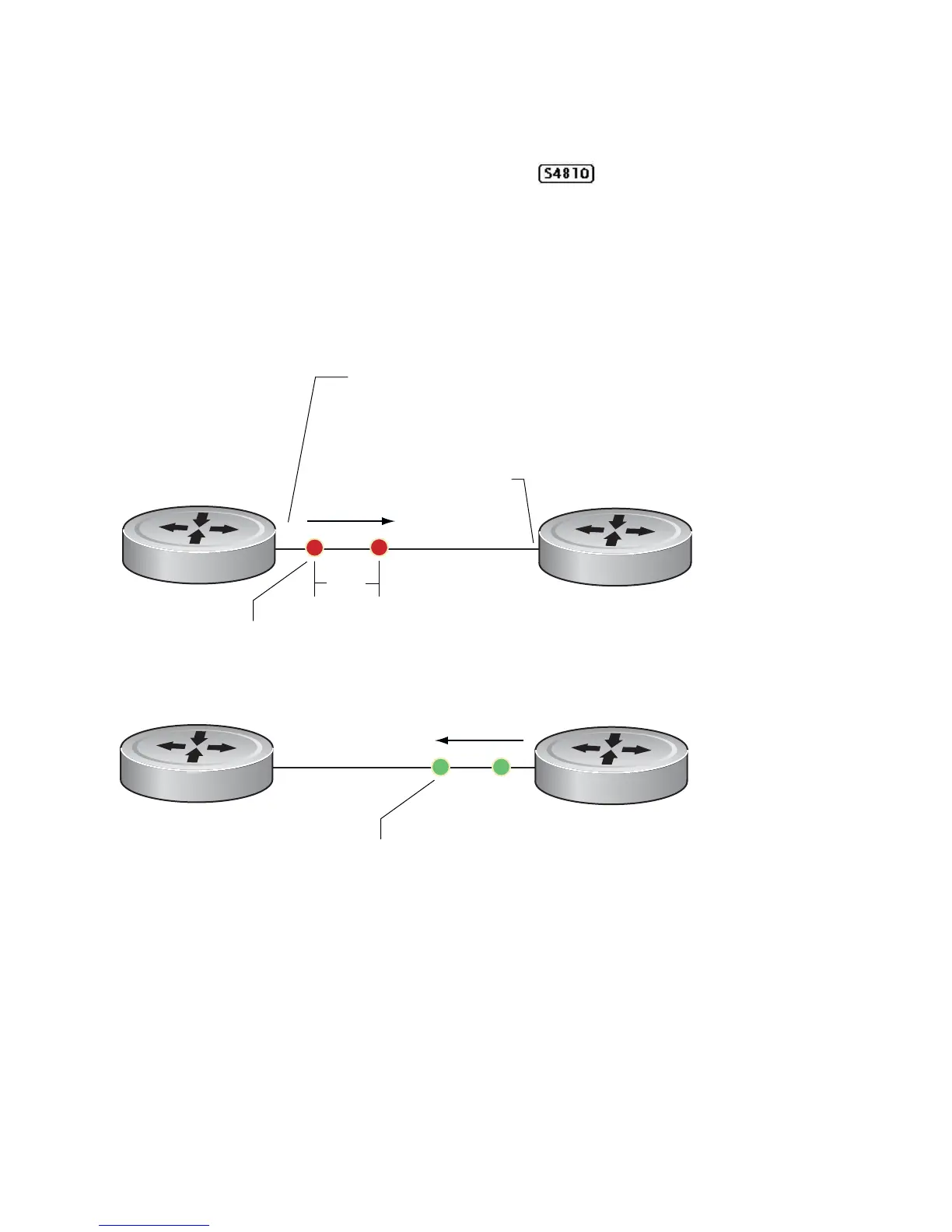636 | Layer 2
www.dell.com | support.dell.com
Far-end Failure Detection
Far-end Failure Detection is supported on platforms e Z
Far-end Failure Detection (FEFD) is a protocol that senses remote data link errors in a network. It responds
by sending a unidirectional report that triggers an echoed response after a specified time interval. FEFD
can be enabled globally or locally on an interface basis. Disabling the global FEFD configuration does not
disable the interface configuration.
Figure 29-10. Configuring Far-end Failure Detection
The report consists of several packets in SNAP format that are sent to the nearest known MAC address.
In the event of a far-end failure, the device stops receiving frames, and after the specified time interval,
assumes that the far-end is not available. The connecting line protocol is brought down so that upper layer
protocols can detect the neighbor unavailability faster.
FTOS(conf-if-gi-4/0)#show config
!
interface GigabitEthernet 4/0
no ip address
switchport
fefd
no shutdown
FTOS(conf-if-gi-1/0)#show config
!
interface GigabitEthernet 1/0
no ip address
switchport
fefd
no shutdown
R1
R2
2w0d4h : FEFD packet sent via interface Gi 1/0
Sender state -- Bi-directional
Sender info -- Mgmt Mac(00:01:e8:14:89:25), Slot-Port(Gi 1/0)
Peer info -- Mgmt Mac (00:01:e8:14:89:25), Slot-Port(Gi 4/0)
Sender hold time -- 3 (second)
R1
R2
2w0d4h : FEFD packet sent via interface Gi 4/0
Sender state -- Bi-directional
Sender info -- Mgmt Mac(00:01:e8:14:89:25), Slot-Port(Gi 4/0)
Peer info -- Mgmt Mac (00:01:e8:14:89:25), Slot-Port(Gi 1/0)
Sender hold time -- 3 (second)
Keep-alive
Echo
Interval
Layer2 001

